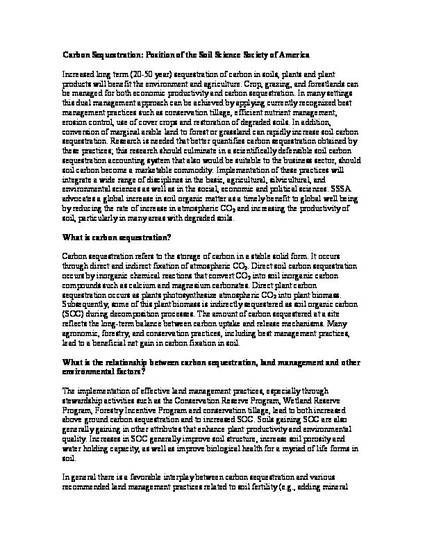
Increased long term (20-50 year) sequestration of carbon in soils, plants and plant products will benefit the environment and agriculture. Crop, grazing, and forestlands can be managed for both economic productivity and carbon sequestration. In many settings this dual management approach can be achieved by applying currently recognized best management practices such as conservation tillage, efficient nutrient management, erosion control, use of cover crops and restoration of degraded soils. In addition, conversion of marginal arable land to forest or grassland can rapidly increase soil carbon sequestration. Research is needed that better quantifies carbon sequestration obtained by these practices; this research should culminate in a scientifically defensible soil carbon sequestration accounting system that also would be suitable to the business sector, should soil carbon become a marketable commodity. Implementation of these practices will integrate a wide range of disciplines in the basic, agricultural, silvicultural, and environmental sciences as well as in the social, economic and political sciences. SSSA advocates a global increase in soil organic matter as a timely benefit to global well being by reducing the rate of increase in atmospheric CO2 and increasing the productivity of soil, particularly in many areas with degraded soils.
Available at: http://works.bepress.com/c_burras/15/

This paper is from Soil Science Society of America, http://www.soils.org/about-society (2001, reviewed 2011).